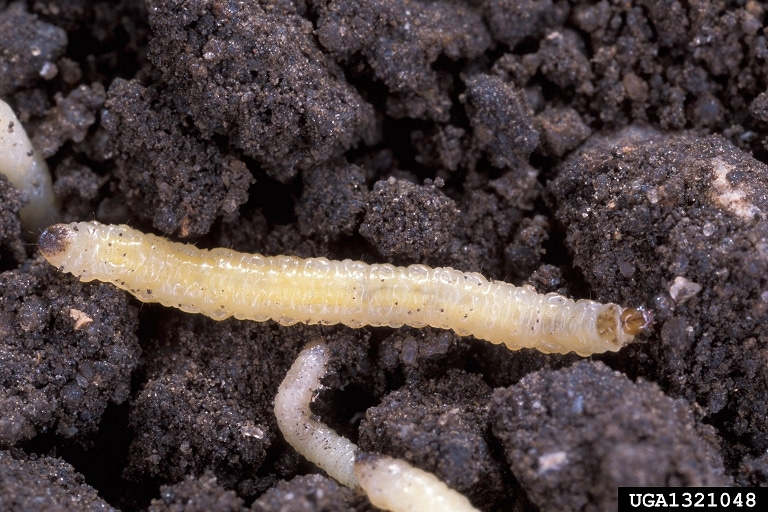July 25, 2014

Corn rootworms are one of the most damaging pests in the Corn Belt. According to the USDA, they are responsible for up to $2 billion in lost revenues each year. The best way to scout for this pest is by digging up plants and inspecting roots for larval damage.
Identifying damage in corn roots after pollination can help growers evaluate current management practices and plan ahead for next year. Jeff Housman, Mycogen Seeds customer agronomist, outlines six steps for a successful root dig.
1. Start with a plant from a refuge strip or untreated area. Dig 6-8 inches around the plant as to not harm the existing roots. Untreated plants typically have a smaller root mass, making it easier to pull the plant out of the ground.
2. Look for larvae in the soil and on the roots. Damaged roots may appear rotted and will have pinhole markings where corn rootworms have entered the plant’s roots. “Larval damage sacrifices root mass and limits the plant’s ability to stand upright,” Housman says.
3. Survey plant silks for adult beetles. Corn rootworm damage appears primarily in the roots of the plant, but adult beetles can prevent full ear fill near the silks after pollination. Identifying corn rootworm adult beetles is a clue that root damage was, in fact, caused by this pest and can help you evaluate if an insecticide is needed.
4. Examine overall plant and stalk health. Damaged roots restrict the amount of nutrients that can be delivered to a plant. The resulting nutrient deficiency leads to a poor crop and ear development and sacrificed yield at harvest.
5. Dig plants from three other areas. Housman recommends examining roots and overall plant health from at least three other plants in the field for an accurate sample. Treated plants and plants with less corn rootworm damage will be sturdier, with larger root masses, and will be more difficult to dig up.
6. Wash roots. Soak the plant roots in buckets of water for 30 minutes. This will allow you to examine clean roots and identify larvae that float to the top of the water. Housman uses the Iowa State University Node-Injury Scale to assess the severity of root damage.
“Root digs are helpful in evaluating the success of current corn rootworm management practices, but prevention during planting is the best way to combat this yield-robbing pest,” Housman says.
If root digs reveal rootworm damage, Housman recommends growers adjust management for those fields next year. Options include rotating crops, avoiding continuous corn rotations as well as not planting Bt-traited corn with the same single mode of action for more than two years in a row.
 You might also like:
You might also like:
Can soybean demand keep grain prices afloat?
You May Also Like




